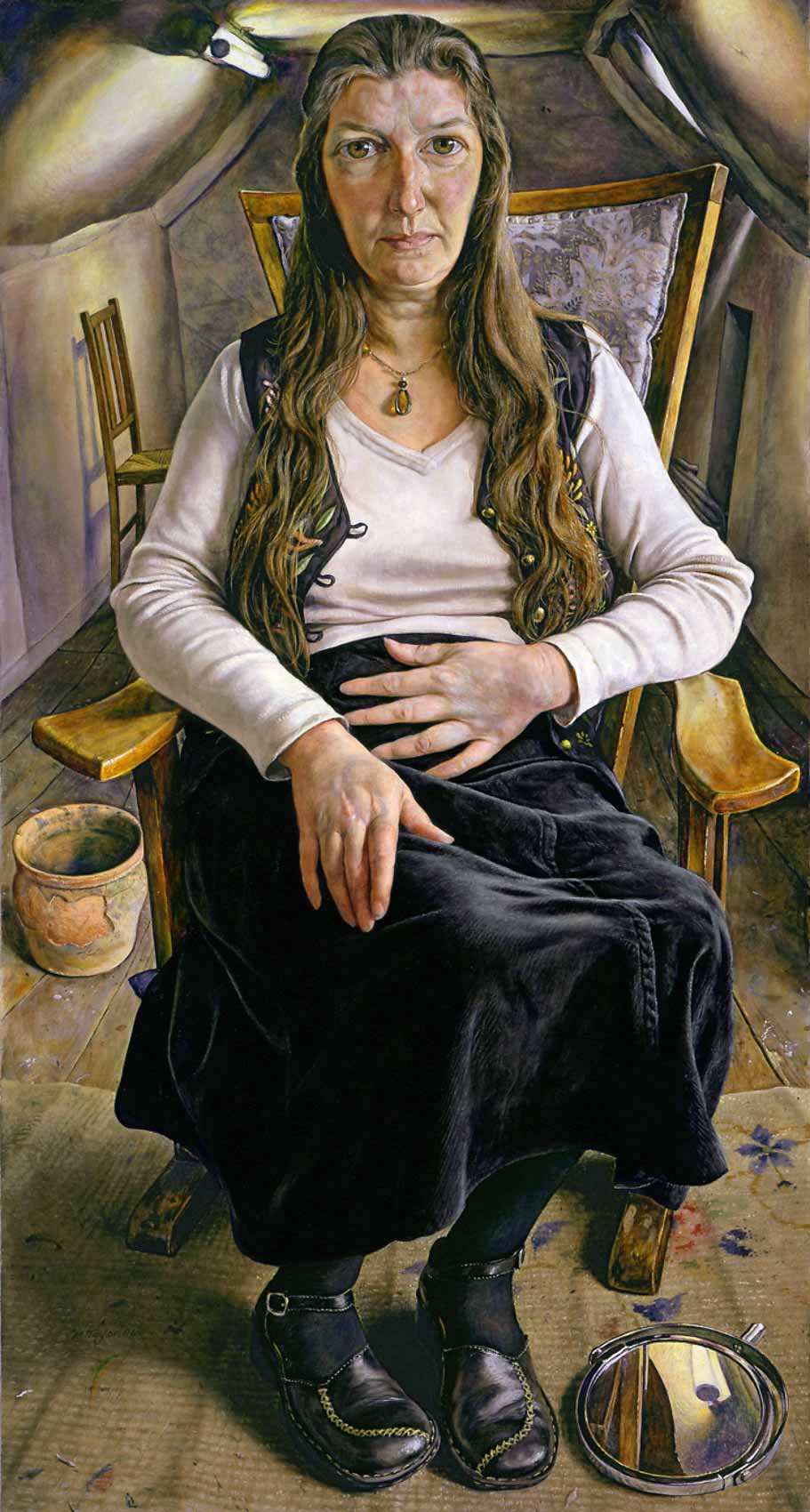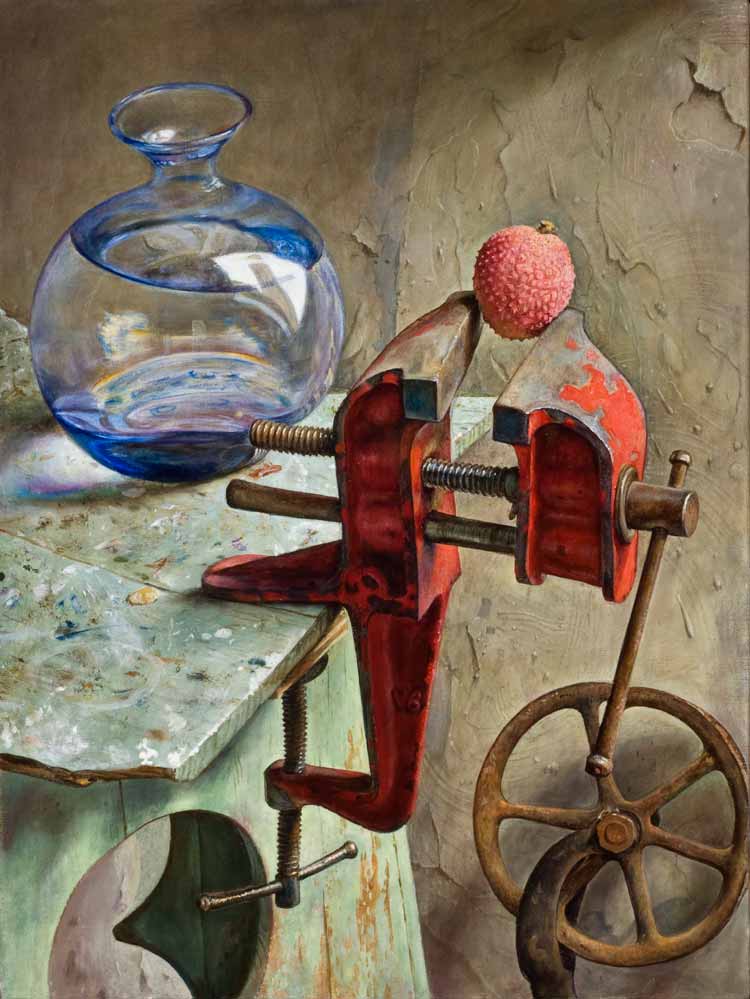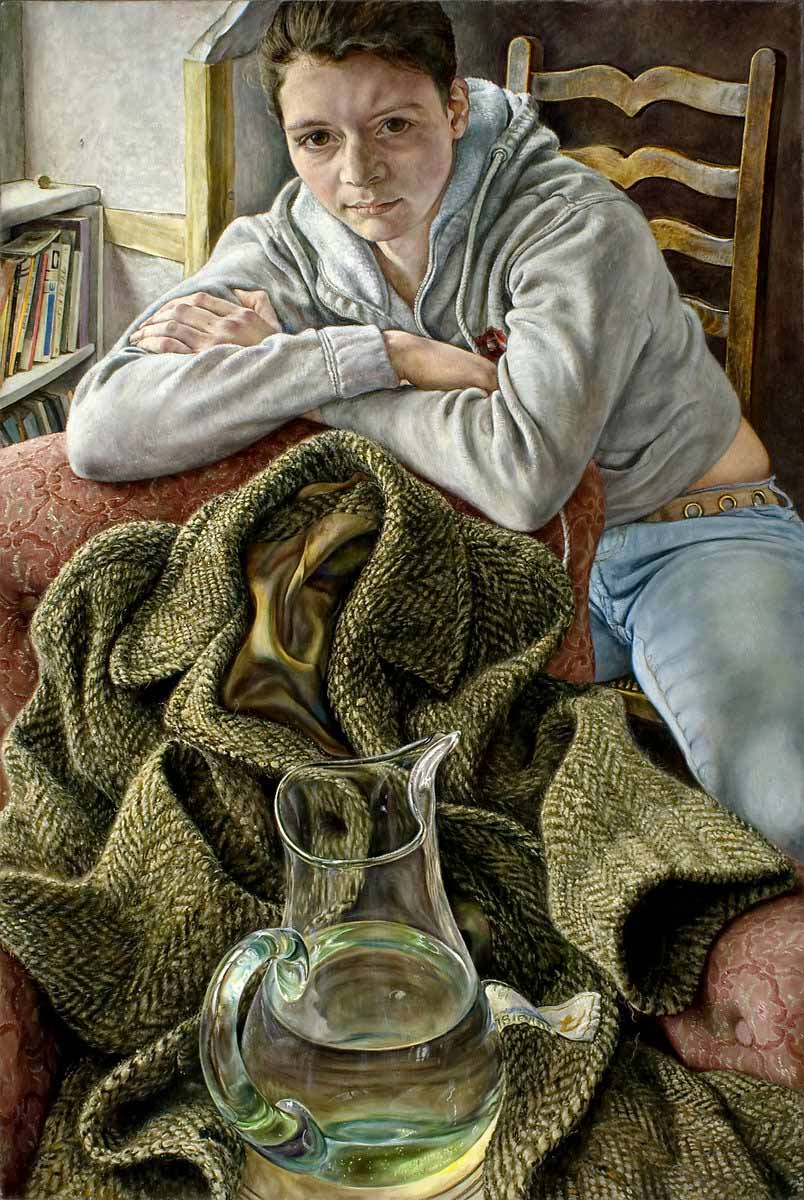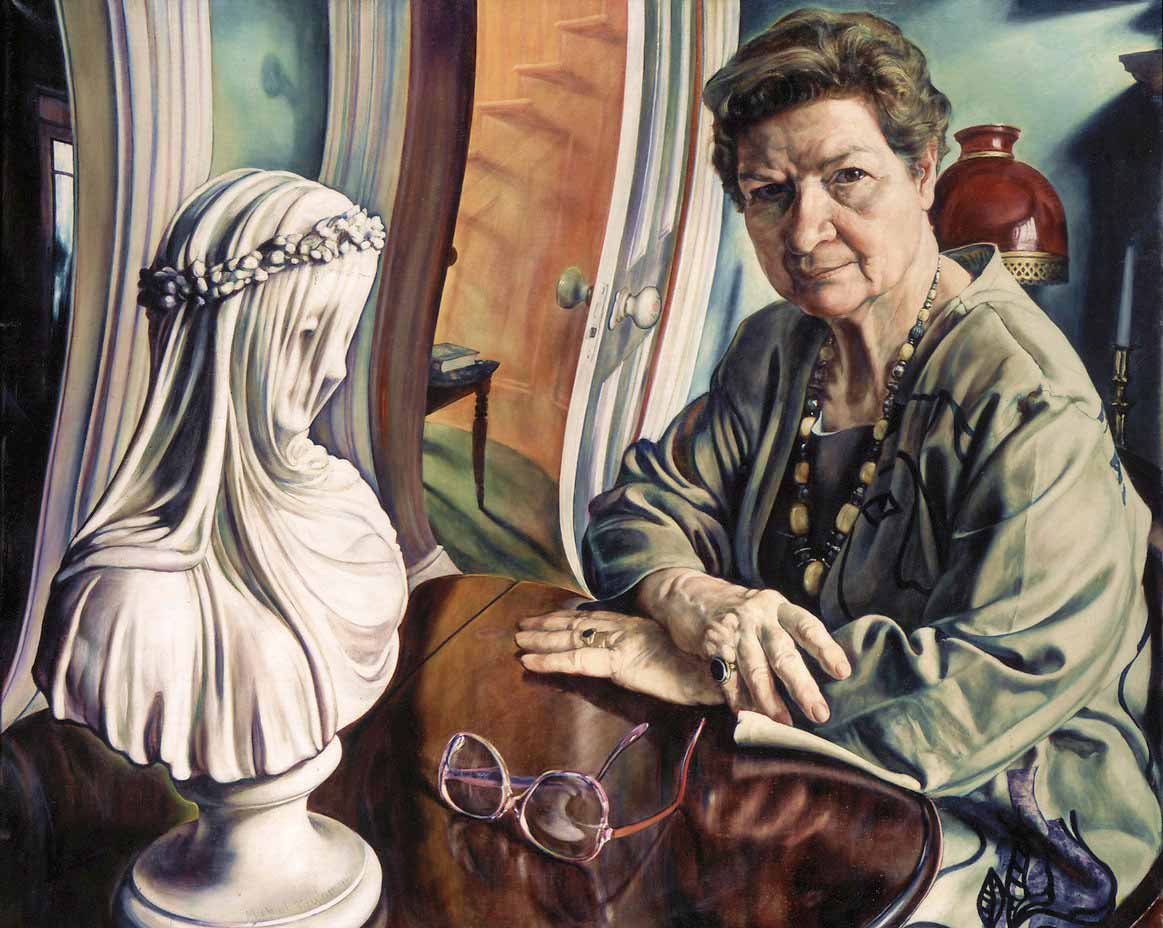Artist Spotlight: Michael Taylor
February 18, 2020
Everyone’s work is deeply idiosyncratic: in our regular Spotlight segment we explore artists’ experiences and inspiration to understand what defines and inspires their unique styles.
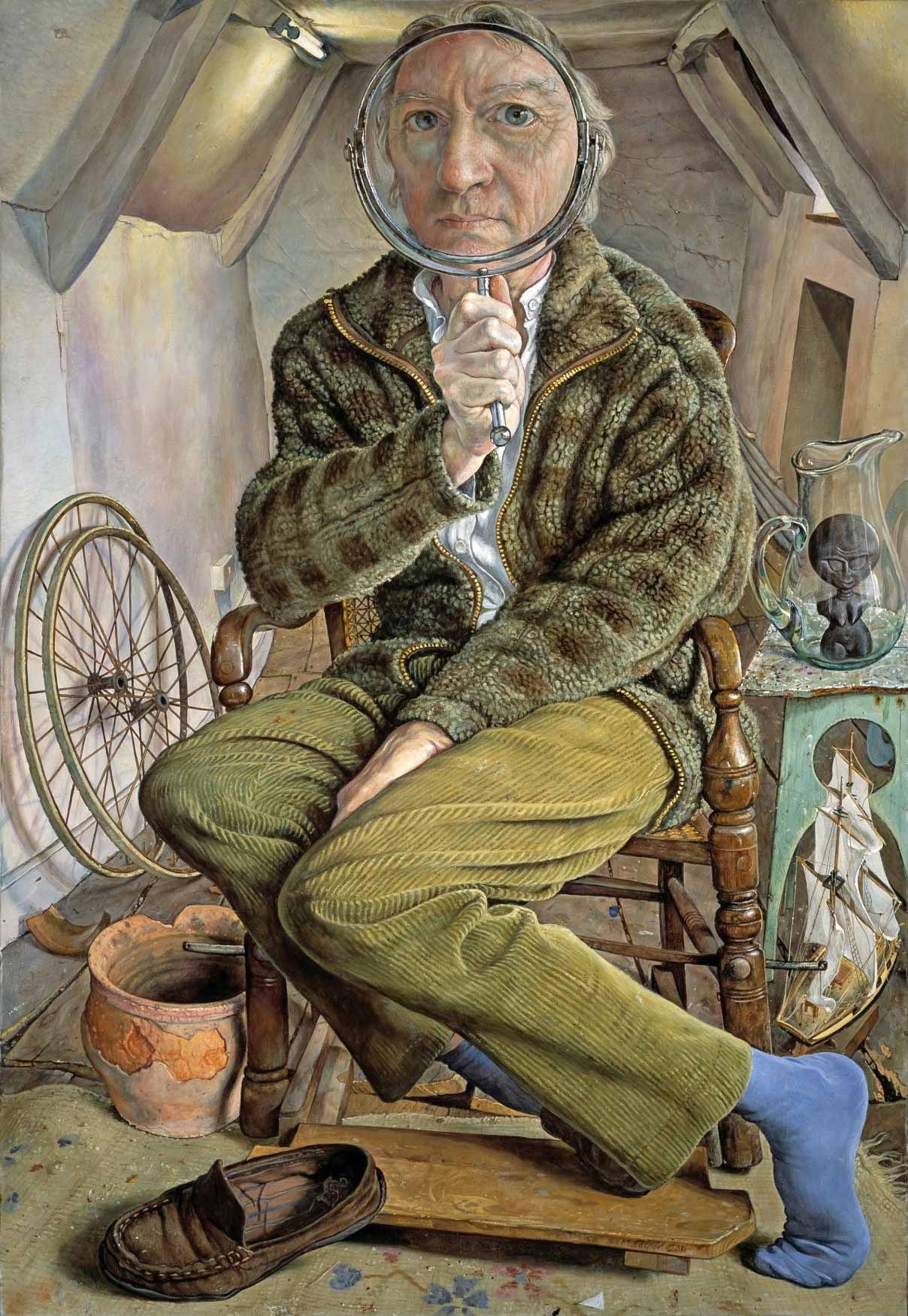
Can you give us a brief background on yourself?
I was always drawing as a child, usually pictures of the things that interested me at the time. So plenty of sailing ships, trains, cowboys, Dennis the Menaces, and caricatures. The greatest treat on pocket money days was a new black Bic pen and a pad of paper. Things changed overnight when I was unable to make a boat shape right, I put a model on the table and drew it to life. The profound difference this made and the fascinating business of creating an illusion of reality started me on a lifelong journey towards firstly making this illusion convincing, and then subsequently subtlety subverting it. My father had a well stocked book case including books on surrealism, British modernism, Japanese printmakers, Salvador Dali. and annuals of Giles cartoons. All of which got digested and incorporated in my work. With his support I gave up A-levels and went to Worthing Art School, and then Goldsmiths to study fine art for three years. After leaving I considered a career driving London buses, but became inspired by reading a biography of the painter Mark Gertler. I decided to paint for a year supporting myself working every evening in a pub in Greenwich. I did two paintings both of which were shown at the Royal Academy. When both sold, I gave up the pup job and have continued to do one painting after the other more or less without a break since.
What kind of influence does your location have on your career?
Not being a landscape painter, very little really. Having said that, the Dorset landscape where I live is littered with Iron Age burials with their associated grave goods. This has certainly influenced some of the poses and accompanying props in a number of works such as, Portrait with Grave Goods. Also, finding a Victorian rubbish dump being eroded into the sea while fossil hunting gave rise to a whole series of still lives of broken, discarded, and modern fossil-like everyday objects.
What is your greatest source of inspiration?
That varies from time to time depending on what I'm attempting to achieve, but in no particular order: Vermeer, Stanley Spencer, Velazquez, Francis Bacon, early Lucian Freud (Girl with a Rose of 1948 was in one of Dad's books and I never really got over it), Fra Angelico, and strangely the cartoonist Carl Giles, who's wonderful manipulation of perspective taught me a huge amount.
Could you pick one piece of art that has made a lasting influence on you, and if so why?
I would say probably the Girl with a Rose by Freud for it's stillness, intensity, controlled distortions, and just it's very strangeness. It is quite clearly based on a real person but the rigour of the observation has pushed it somewhere very disturbing.
What skills or techniques do you find most useful in your line of work? Do you use primarily traditional or digital methods to create your artwork?
Mostly techniques that would be familiar two hundred years ago. These have evolved over millennia from cave painting onwards to service our seemingly primal need to create a 'likeness' and are very effective. By this I don't mean likeness in the portrait sense, but the need to create or possess convincing recreations of the things we need, fear, or love. This of course includes traditional portraits, but also inventive manifestations of deities, or convincing depictions of food or prey. While mostly working from life, I do employ stereoscopic transparencies to assist in the studio and have had to invent and build suitable equipment. A good stereo large format slide contains a wealth of visual information about form and surface totally missing from normal photographs. This is particularly useful assisting with a portrait of someone too busy to give me the many hours I normally require. My iPad mini plays a very similar role to the drawing pads and biros from my childhood, and I love playing about on it. Sometimes even including sketches or cartoons in emails. Indeed, this interview has come about as a result of sending fan mail to Scriba when I bought one of their stylus! So far the only way I have used digital techniques professionally is to put photos of paintings I am working on into Procreate so that I can experiment with alterations to composition or tone without time consuming experiments on the actual canvas.
How can people who are interested in discovering more of your work find it?
Most of my work has been studio based and is in private collections, but a selection can be seen on my website www.mrtaylor.co.uk. Quite early in my career I was lucky enough to win the National Portrait Gallery Award and this led either directly or indirectly to a number of portrait commissions which can be seen in various public collections including the NPG London, the Holburne Museum of Art Bath, and the House of Lords. I am represented by the London gallery Waterhouse and Dodd and am a member of the Royal Society of Portrait Painters. Finally, if you ever see the Wes Anderson film the Grand Budapest Hotel, I have to confess to being none other than the late Johannes Van Hoytl, creator of the much coveted, much travelled Boy with Apple painting. Very much a one off!
Scriba is a revolutionary digital stylus that is ergonomically designed to comfortably fit your hand and uses unique Squeeze-Motion technology. Order here.
Articles

In the period since COVID forced many of us back home and out of the office, remote work has become the new norm for many. The flexibility of working from home, especially for those with small children, is very compelling, but making a productive workspace is more than setting up a desk in the spare room. More people are seeking to create functional and comfortable workspaces in their homes, however, it can be difficult to strike the right balance between a professional office space and a cosy home environment. Here are some tips for designing a home workspace that meets both of these needs: Dedicate a specific area for work Designating a specific area for work is essential for separating work from leisure time. This could be a separate room or just a corner of a room. It is important to make sure that the workspace is free from distractions and clutter, as this will help you stay focused and productive. Choose the right furniture Ergonomic furniture is key to a comfortable and productive workspace. Invest in a comfortable chair, a desk that is the right height, and a good-quality mouse and keyboard. If you are prone to back pain, consider a standing desk. Add personal touches Just because your workspace should be functional, doesn’t mean it can’t be personal. Add photos, plants, and other personal items to make the space feel like your own. This will help create a sense of comfort and make you feel at home in your workspace. Good lighting Good lighting is essential for a comfortable workspace. If possible, place your desk near a window for natural light. If not, invest in a high-quality desk lamp to provide bright, even light. Keep it organised An organised workspace will help you stay productive and focused. Use desk organisers, filing cabinets, and other tools to keep your work area free from clutter. A clean and organised workspace will also help you start each day with a clear mind. Consider your work style Think about the type of work you do and how you like to work. If you prefer a minimalist workspace, opt for a simple desk and a few basic supplies. If you need space for multiple screens and other technology, make sure you have enough room to work comfortably. Take breaks It’s important to take breaks throughout the day to avoid burnout. Step away from your desk, go for a walk, or do some stretching exercises to clear your mind and recharge.








